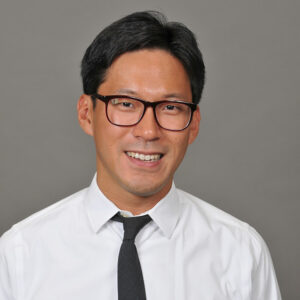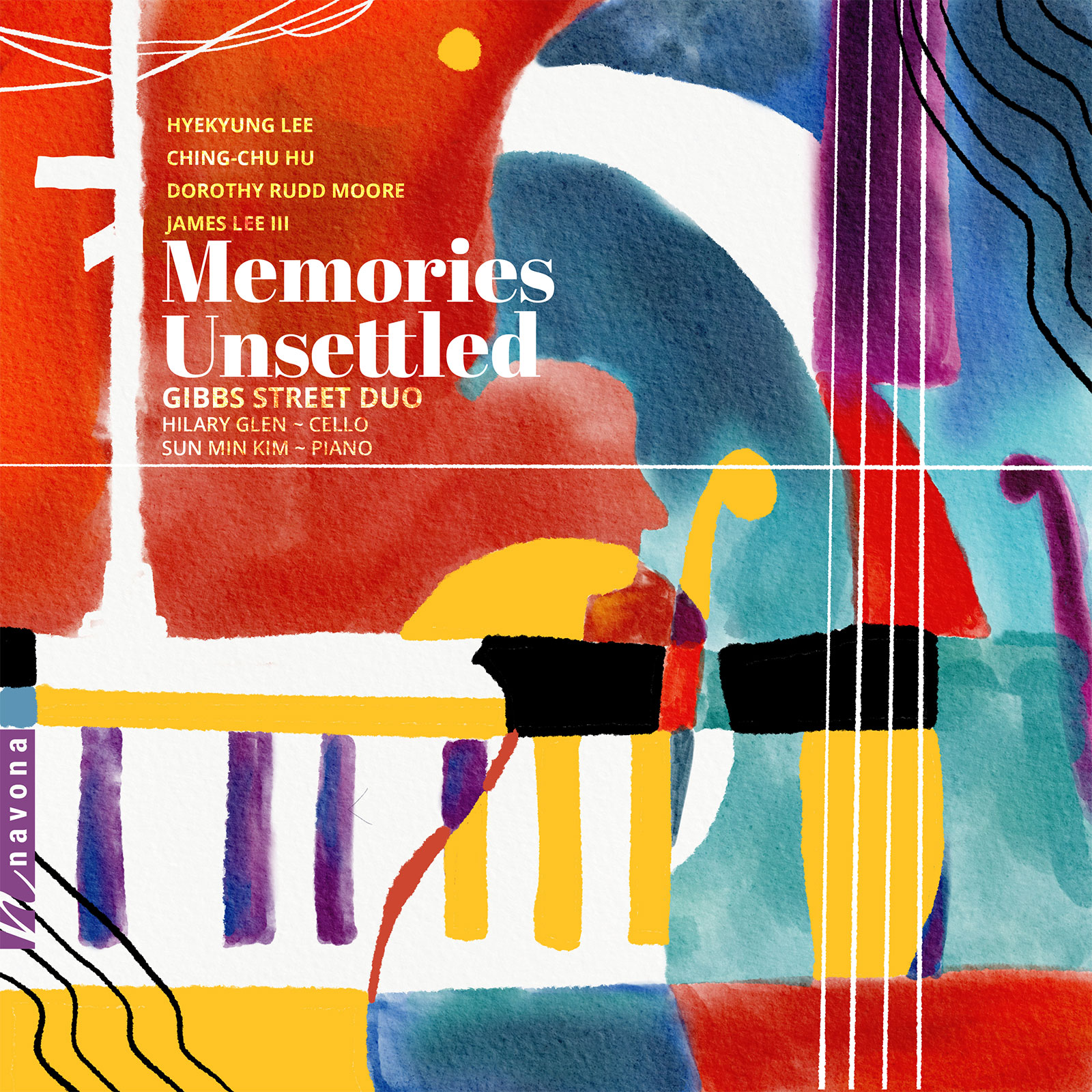Memories Unsettled
HyeKyung Lee composer
Ching-chu Hu composer
Dorothy Rudd Moore composer
James Lee III composer
Gibbs Street Duo
Hilary Glen cello
Sun Min Kim piano
MEMORIES UNSETTLED explores music that has too often been marginalized from the historical musical canon. Sun Min Kim and Hilary Glen joined forces during the height of the pandemic, forming the Gibbs Street Duo. This piano-cello duo tours colleges and universities across the country, sharing their inspiring music with students, faculty, and other patrons of the arts. The album features composers from diverse backgrounds including Dorothy Rudd Moore, James Lee III, Ching-chu Hu, and HyeKyung Lee. Moore’s Dirge and Deliverance is a sonata in two movements written in 1971 that uses music to reflect on the Black experience in 1960s America. Abraham’s Sons written by James Lee III was written in 2013 to express horror and outrage at the killing of Trayvon Martin. Through these pieces and more like them, the Gibbs Street Duo demonstrate the power and relevance of music as a catalyst for change.
Listen
Stream/Buy
Choose your platform
Track Listing & Credits
| # | Title | Composer | Performer | |
|---|---|---|---|---|
| 01 | Distant Memories | HyeKyung Lee | Hilary Glen, cello; Sun Min Kim, piano | 10:05 |
| 02 | Dream and Variations | Dorothy Rudd Moore | Sun Min Kim, piano | 15:28 |
| 03 | Abraham’s Son (In Memoriam: Trayvon Martin) | James Lee III | Hilary Glen, cello | 8:23 |
| 04 | Dirge and Deliverance: Adagio | Dorothy Rudd Moore | Hilary Glen, cello; Sun Min Kim, piano | 10:01 |
| 05 | Dirge and Deliverance: Allegro | Dorothy Rudd Moore | Hilary Glen, cello; Sun Min Kim, piano | 7:31 |
| 06 | Night: Slumber | Ching-chu Hu | Hilary Glen, cello; Sun Min Kim, piano | 4:10 |
| 07 | Night: Tossing and Turning | Ching-chu Hu | Hilary Glen, cello; Sun Min Kim, piano | 4:37 |
Recorded August 16-19, 2021 at Auer Hall in Bloomington IN
Recording Engineer Jacob Belser
This album is funded by Denison University Research Grant.
Executive Producer Bob Lord
Executive A&R Sam Renshaw
A&R Director Brandon MacNeil
A&R Chris Robinson
VP of Production Jan Košulič
Audio Director Lucas Paquette
Mastering Melanie Montgomery
VP, Design & Marketing Brett Picknell
Art Director Ryan Harrison
Design Edward A. Fleming, Morgan Hauber
Publicity Patrick Niland, Aidan Curran
Content Manager Sara Warner
Artist Information

Hilary Glen
Hilary Glen, cellist, has been praised as a “standout performer” who has successfully “taken on the demanding and most expressive responsibilities assigned to [her] instrument.” As an enthusiastic performer, she enjoys a varied career that has taken her from the Italian Alps to Carnegie Hall and many places in between. She has collaborated with musicians including Gil Shaham, Gary Hoffman, Yefim Bronfman, and The Who. Formerly a cellist with the New World Symphony, Glen currently performs as the Assistant Principal in the Atlanta Opera Orchestra, Principal of the Columbus Symphony Orchestra in Georgia, and is a section member of the Atlanta Ballet Orchestra and the Des Moines Metro Opera.

Sun Min Kim
South Korean pianist Sun Min Kim serves as Coordinator of Keyboard Studies and Assistant Professor of Music at Denison University. He made his debut with the Ulsan Symphony Orchestra at age 13, performing Grieg’s Piano Concerto. He has been a prizewinner of national and international competitions such as the Maria Canals International Piano Competition, MTNA, and International Crescendo Music Awards. In 2008, the professional music fraternity Mu Phi Epsilon awarded him the Sterling Achievement Award, the highest honor that the fraternity bestows upon its collegiate members. As a laureate of various awards, he debuted at Carnegie Hall’s Weill Recital Hall, Merkin Concert Hall, and other prestigious venues across the United States and abroad.
Gibbs Street Duo
The Gibbs Street Duo was formed in June 2020 with the intent to seek out, explore, and introduce music of historically-marginalized composers to the musical canon. During the height of the pandemic, the duo focused their energy on presenting their ideas about this recording project at national conferences and various institutions of higher education around North America. Currently, the Gibbs Street Duo is touring colleges and universities across the country to share this inspiring music with students, aficionados, and other music professionals.
HyeKyung Lee
An active composer and pianist, HyeKyung Lee has written works for diverse genres and media: from toy piano to big concerti, from electronic music to children’s choir, and film scores to percussion ensembles. Recent commissions are just as diverse, including the prestigious Bonnie McElveen Commission for Maestro Gerard Schwarz and the Eastern Music Festival, a work for the Renée B. Fisher Piano Competition, and a showpiece for the Meg Quigley Vivaldi Bassoon Competition.
Ching-chu Hu
Born in Iowa, Ching-chu Hu studied at Yale University, Freiburg Musikhochschule in Germany, the University of Iowa, and finally the University of Michigan for his D.M.A. Currently, he is an active professor, pianist, and conductor. Recent projects include performances of a live soundtrack to Charlie Chaplin’s 1925 version of The Gold Rush for symphony orchestra, and a soundtrack to Loose Film’s award-winning Among Other Things.
Dorothy Rudd Moore
Dorothy Rudd Moore was born into a musical family in New Castle DE in 1940. Her mother was a singer and amateur pianist; from an early age, Moore had encouragement and enjoyed making up her own melodies and songs. As she aged and these musical talents became more apparent, her parents made sure she received a formal musical education, and she went on to major in music at Howard University while also studying privately with Nadia Boulanger. Upon finishing studies in France, Moore moved to New York City, where in 1968 she co-founded the Society of Black Composers.
James Lee III
James Lee III, born in 1975, graduated with a Doctor of Musical Arts degree from the University of Michigan in 2005. A self-professed Adventist, Lee takes every opportunity to explore biblical, spiritual, and sacred themes in his compositions, and he takes care to interweave these themes with African American motifs, sounds, and influences. Lee’s orchestral works have been commissioned and premiered by the National Symphony, Detroit Symphony, Baltimore Symphony, Chicago Symphony, Boston Symphony, Cincinnati Symphony, and others.

